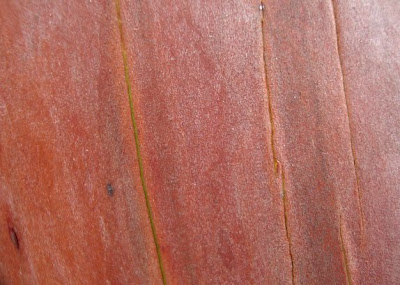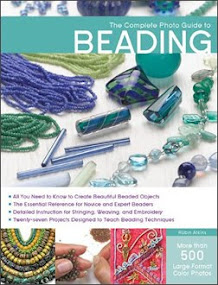
It's a pin (brooch) made by Elaine Hartley, who lives in Ohio and loves to visit the Pacific Northwest. We met about 15 years ago when she came to buy beads from me... back when I lived in Seattle and had a little shop called Beads Indeed. After that, Elaine and I connected three more times when she took workshops from me at various places. We share a love for the itty-bitty beads, working from intuition and beading with texture.
Planning a trip to the NW, Elaine contacted me and we arranged to spend a couple of days together on San Juan Island, WA where I live. Here we are on day-one at Lime Kiln Lighthouse.
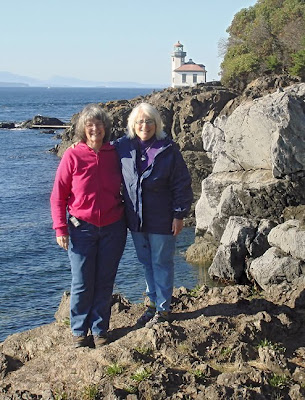
Day-two, we decided to spend the morning playing in the tide pools at Deadman's Bay on the West side of the island. Later in the day, we would spend a few hours beading together. I'll show you some pictures from both...

At the beach, while Elaine went straight to the tide pools, I started by arranging small pebbles on a piece of driftwood. Temporary art...


Driftwood tied with seaweed... more temporary art... this one by an unknown artist...

Then I moved down the beach toward the tide pools where I found kelp and seaweed.
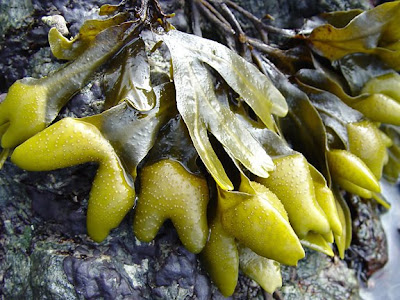

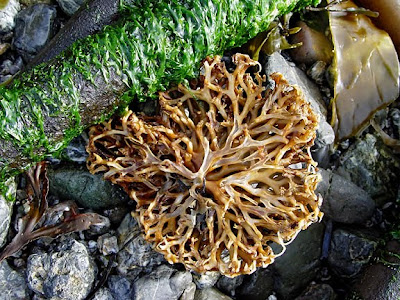

Finally I reached the pools themselves, where I found these acorn barnacles! They remind me of miniature cabbages... Let's try making some with beads!

All the while, Elaine was photographing a porcelain face in the tide pools. Elaine named the face Isis. Soon I too got hooked on her idea and borrowed Isis for a few shots. From then on both of us, captivated by the possibilities of photographing Isis in different places, spent another hour sharing her. Isn't digital photography just the MOST wonderful thing??? OMG! We probably took over 1,000 pictures between us. No waiting and no cost for developing and printing!!! I don't have any of Elaine's photographs to show you... but here are a few of my Isis pictures...
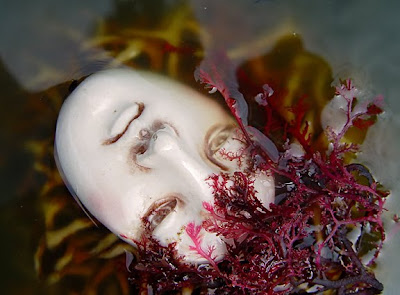




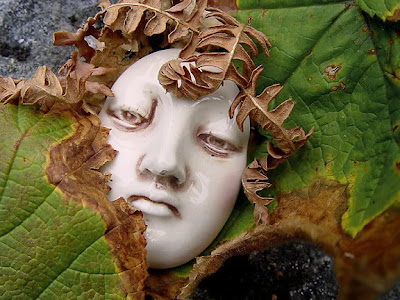
Between beach and beading, Elaine and I stopped for a brief visit with Mona... one of our island's more unusal residents! Elaine was smitten by Mona's soft muzzle...

And Mona seemed to like Elaine pretty well too...

After that, we got out our beads for a while. Elaine brought a few of her things to show me...

The pin/brooch, pictured above, is her beaded version of a tide pool. Isn't it grand?! Elaine likes to add textural knotting (half-hitches) done with embroidery floss. She likes the contrast of the beads with the thread. Me too!

Elaine often beads on a double layer of wool felt held together with dense zig-zag machine stitching, which is firm enough to bead without using any other stabilizer. This is the start of a piece about her home in Ohio. Two streams converge on her 2-acre property... She's going to bead her love for this place! When she finishes this piece, she'll insert it into the cover of a journal, similar to the one below, which is her current journal.

Elaine plans to sign up for the 2010 Bead Journal Project, so we'll all be seeing more of her lovely work soon! Yay!!!!
Bead pals are just the best!!! I am so blessed to have made a personal connection with Elaine and with other wonderful beaders around the world. Can't get any better than that!
* * * * * *
Heart update...
Thanks to everyone who wished me well and gave me optimistic reports regarding my heart issues. Tomorrow will be the last day that I must wear the EKG monitor.. thank goodness!
After I return from teaching in Phoenix, I'll have an appointment with my cardiologist and we'll decide what to do. I'll keep you posted. I really appreciate your concern and support!
*****
Camera Information...
Jo, in New Zealand, wrote to ask me about the camera I used to take these pictures. I'm a Sony girl... the mechanics and operation of Sony cameras just makes intuitive sense to me, so I stick with it.
The camera I used for these pictures is old and many updated models by Sony have taken its place. However, I bet the newer ones work just as well. Mine is a Sony Cybershot, model DSC-F717. My brother Thom got one like it, reconditioned but in good working order, on eBay about a year ago. He too is satisfied with it.
However, I must add that for me, it's more about Photoshop than the camera. I spend many hours adjusting my pictures to get the color, exposure and contrast right. Most of the pictures in this post are full frame (not cropped). However, I had to adjust color on most of them. I took a class at our community college a long time ago, when Photoshop first hit the streets. That was enough to make me brave about experimenting with it. I've also learned a lot of helpful Photoshop techniques from books by Scott Kelby. Over the years, we've bought the Photoshop updates to CS2, although I most frequently use the older version, Photoshop CS.
I take all of my bead pictures with this camera. Whenever possible, I shoot pictures of my beadwork outside in natural light under overcast skies or high clouds, which provides lots of light but minimal shadows. No doubt about it, beadwork is difficult to photograph, mainly because of the shiny, reflective surface of the beads. With any direct light, the reflection will blow out all of the detail and you'll have white spots. Sadly, no camera or Photoshop program can fix a total blow out.
Hope this answers your question, Jo!

One last beach picture... Fall is definitely here.

















